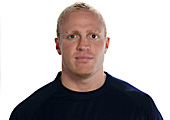Professional hockey players use hockey flow drills in order to move the puck to a higher-percentage area. Since possession in a game of ice hockey is not limited to one team or another at any time in the game, the ebb and flow of offense and defense is interchangeable and the best players are those who can transition from one to the other. A flow drill gives you the best outlet from defense to offense or vice-versa when needed.
Hockey Flow Drills From the Opponent’s End
In any given fore-check, it is necessary for the defensemen to be able to get the puck to take a point shot or distribute a pass to an open forward. Forwards who are indeed in the opponent’s zone need to be able to execute a corner to blue line drill so they can move the puck to their defenders on the attack. This drill requires three players, one of whom stands in the corner with a dozen or so pucks. The other two stand at the blue line waiting to attack. As the corner player passes the puck to the player on the blue line, both defensemen attack the net, either by passing to one another or taking a high-percentage shot.
Hockey Flow Drills To Begin a Transition
Jump-starting a counterattack rush is a hugely valuable hockey skill, and the reason that some NHL defensemen are paid millions of dollars. Drill a puck transition with three players, two defenders and a forward.
The two defenders start behind the net while the winger skates out on the transition. The defenseman with the puck must move out of the zone while passing to his partner, at which point his partner passes to the open winger. This emphasizes springing a player for a breakaway while the other team transitions or does a line change.
Emphasize Numbers for an Advantage
A popular drill is the three up and down. In this situation, a complete attacking line will begin in front of their own net. The center takes the puck as if from a faceoff and then begins to skate out, passing to either of his wingers. No player can have the puck on their stick for longer than a second, and if someone holds it too long the drill starts over. This drill emphasizes quick decisions and reactions.
Reduce Offside Calls
Not all drills emphasize putting the puck in the net. A simple drill tries to eliminate the offsides calls that break up a play. One player stands at the red line to pass to a streaking player before they hit the opponent’s blue line. This continues until they hit three offsides, at which point a new passer comes in.
If you want to get better at the game, sometimes you need professional assistance. That is where we at hockeyOT come in. Our training program can be customized to suit your specific needs, in addition to that, you can record and track your own progress.














